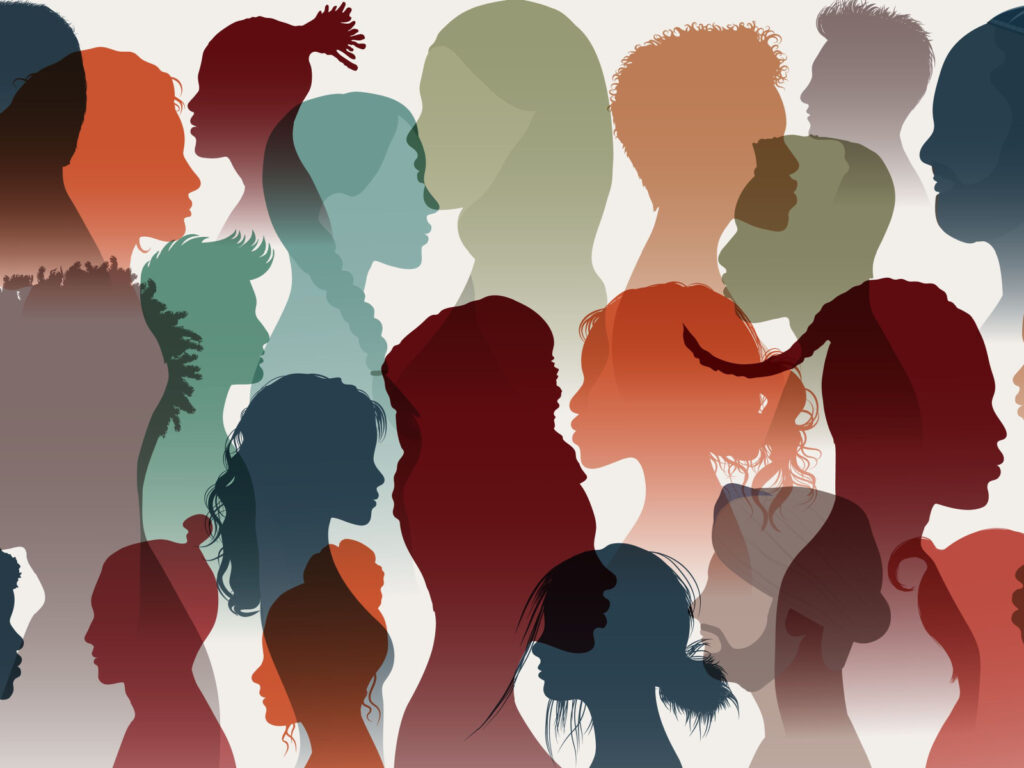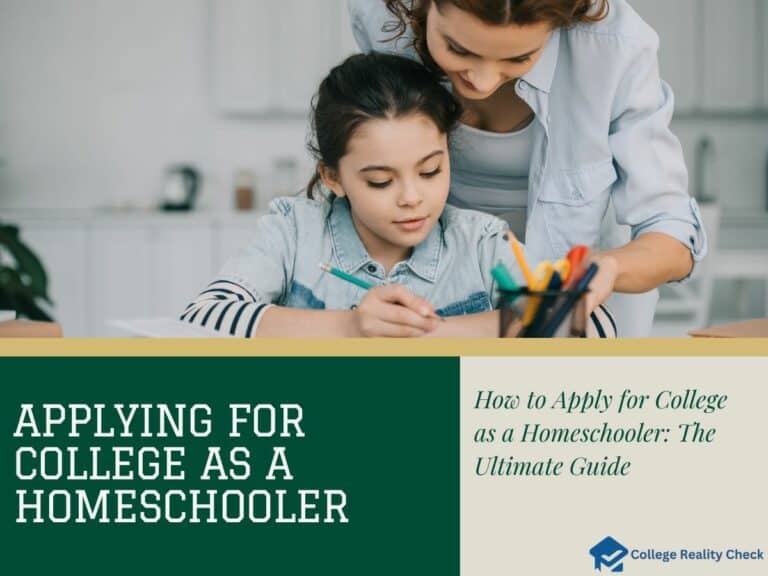14 Equality/Diversity Options to Affirmative Action in College Admissions
The vast majority of selective colleges and universities in the US adopt a holistic policy in the admissions process, as mentioned earlier — as much as 95% of higher education institutions do.
While it consequently means that they consider various factors when reviewing applications, it’s unclear how many employ affirmative action.
However, what’s clear is that there are states where affirmative action is prohibited.
It all started in 1996 in California when voters decided to ban the adoption of affirmative action in the admissions process at public or state universities.
It was sparked by the idea that giving preferences to people from certain groups “puts one group against another and perpetuates social tension.”
Different states where affirmative action is banned have barred the policy in different ways — some, such as in the case of the Golden States, happened at the ballot, while others did so through executive orders or legislative actions.
Let’s take a look at all 9 US states where affirmative is banned and since which year:
- California (1996)
- Washington (1998)
- Florida (1999)
- Michigan (2006)
- Nebraska (2008)
- Arizona (2010)
- New Hampshire (2012)
- Oklahoma (2012)
- Idaho (2020)

But to give you an idea of how commonly race is considered in the admissions process, here are the number of public colleges and universities in some US states that take the said factor into consideration:
- Colorado (3 out of 13)
- Connecticut (4 out of 7)
- Delaware (1 out of 2)
- Georgia (3 out of 23)
- Illinois (3 out of 12)
- Indiana (2 out of 14)
- Kentucky (2 out of 8)
- Louisiana (2 out of 15)
- Maine (1 out of 8)
- Maryland (5 out of 13)
- Massachusetts (4 out of 13)
- Minnesota (3 out of 12)
- Missouri (2 out of 13)
- New Hampshire (3 out of 5)
- New Jersey (6 out of 13)
- New York (11 out of 35)
- North Carolina (7 out of 16)
- North Dakota (1 out of 6)
- Ohio (2 out of 22)
- Oregon (2 out of 7)
- Pennsylvania (10 out of 41)
- Rhode Island (1 out of 2)
- South Carolina (2 out of 12)
- South Dakota (1 out of 7)
- Tennessee (2 out of 9)
- Texas (2 out of 36)
- Utah (1 out of 6)
- Vermont (1 out of 5)
- Virginia (8 out of 15)
- West Virginia (1 out of 10)
- Wisconsin (12 out of 13)
That brings the total number of public institutions in some states that consider race in the admissions process and thus may adopt affirmative action to 108.
But keep in mind that the number may not be exhaustive because data for all 620 plus 4-year public institutions in the country is not available.
It’s not a secret that recent changes in the Supreme Court made many college admissions specialists believe that the days of affirmative action in higher education are over, which caused a lot of anxiety in the profession.
While we do not want to get into political and cultural debate, we want to note that there are ways to ensure diversity in college admissions.
Below, you will come across different ones, including projects by the government, colleges themselves, various race-neutral alternatives, and even the College Board.
Recruitment/Outreach in Underrepresented Areas
Believe it or not, many students from low-performing high schools do not consider earning a bachelor’s degree an option.
True enough, in areas where these institutions are located, very few individuals have pursued higher education. Much of the economies in the said areas, in addition, are built on jobs that do not require a college diploma.
It’s for this reason that many colleges and universities where these secondary education schools can be found engage in active recruitment and outreach endeavors.
There are many different strategies employed, and some of them we will discuss shortly — so keep reading!
Some of the various institutions relying on recruitment and outreach programs to welcome more underrepresented students and minorities to their respective campuses are the University of Texas and Texas A&M University.
By introducing scholarship programs, these schools can appeal to a broader pool of applicants.
Another example is the University of Vermont, whose admissions policy includes recruiting promising students attending its partner high schools.
Socioeconomic Status (Education and Income)
Academic institutions that advocate socioeconomic preferences in the admissions process, needless to say, have a penchant for applicants who have performed well in high school despite various social and economic roadblocks.
They argue that students who are from areas with a high concentration of poverty as well as single-parent families whose high school grades and standardized test scores are just slightly lower than those of students from wealthy suburban areas and have access to an assortment of tutoring and test prep programs are worthier of acceptance letters.
In most instances, the consideration of socioeconomic status involves 3 elements:
- Parents’ educational backgrounds
- Parents’ occupations
- Family income
It’s not unlikely for some institutions of higher education to take into account, too, factors such as family structure, neighborhood quality and high school quality, all of which can be quantified by college applications.
Due to the fact that most racial and ethnic groups in the land are disproportionately disadvantaged based on various social and economic indicators, the integration of socioeconomic preference plans in the college admissions process can be beneficial for them even without direct consideration of race or ethnicity.

Altering Selection Criteria
Each college and university has its own set of admissions criteria.
Some have a more holistic approach, which involves the consideration of various academic and non-academic factors in order to look at applicants as a whole.
Meanwhile, others focus more on traditional indicators like GPAs, test scores and class rank.
No matter the case, changing admissions criteria can prove to help improve both equity and fairness in access to some of the most selective institutions out there.
Campus composition can be altered by integrating students from various backgrounds and academic preparations.
Unfortunately, it’s not as simple as it seems because changing selection criteria can affect a wide range of applicants — it’s true that it can impact the admissions chances of underrepresented and minority students alright, but it can also have an effect on the admissions chances of everyone else.
So, in other words, some will have to be displaced.
Lottery Systems
Basically, college admissions lottery systems are characterized by higher education admissions officers randomly selecting admits from a pool of students in an attempt to deal with inequities in access to prestigious schools.
If truth be told, lotteries in college admissions are nothing new — they have been around since 1969.
At first glance, lottery systems seem like literally pulling names out of a hat.
But they’re not random as they appear.
In order for their names to be included in the random draw, students have to meet certain requirements, which can vary from one institution to the next.
Meeting a minimum GPA requirement or graduating from high school within a certain class rank are some examples of criteria applicants need to meet.
In some instances, admissions offices require degree-seeking students to have composite SAT or ACT scores that fall within the specified range.
One of the earliest academic institutions to implement the admissions approach is the University of Illinois at Urbana-Champaign — it once admitted a part of its first-year college of liberal arts and sciences class through it.
Another is our local community college, where there is a lottery system when applying to a very popular LPN program.
Lottery systems also exist in schools abroad, with some relying on them for admission to certain programs.
Targeted Class Rank, e.g. Talented 20
Percentage plans, which guarantee college admission of high school students who graduated above a certain class rank from their respective schools, are adopted in certain states.
Some of those known to employ targeted class rank include California, Florida and Texas.
Florida, for instance, has what it calls the Talented 20 Plan.
Put simply, the state assures college-bound kids who graduate within the top 20% of their high school class admission to one of the 12 state universities.
However, it doesn’t indicate which of the various state universities they will gain admission to.
In order to further encourage high schoolers to strive for better grades, the state has supplemented the Talented 20 Plan by directly admitting the top 5% of public high school graduates and providing them with financial aid, too.
Different US states have different percentage plans.
Texas has the so-called 10 Percent Plan, although the chosen colleges of top graduates may sometimes require participation in the necessary enrichment programs beforehand.
The state of California, meanwhile, has the 4 Percent Plan, which, although effectively provides a race-neutral alternative to affirmative action, uses a complex admissions system.
As an example, there are 3 ways for top-performing high school students to be admitted to any of the UC System campuses via the 4 Percent Plan:
- Eligibility in the statewide context
- Eligibility in the local context
- Eligibility by examination alone

Expansion of AP Courses
It’s not uncommon for many American colleges and universities to take into account high school curriculum rigor in the admissions process.
And to help give students who are underrepresented in numerous higher education campuses in the country an equal fighting chance, some states and university systems have expanded AP courses.
Underserved student populations that have not participated in any AP programs in the past, for instance, were encouraged to take college-level courses with the founding of the AP Initiative by the University of Texas System.
This was when it was learned that only a little more than 50% of Texas high schools had students taking AP classes.
Offering teachers the opportunity to partake in summer institutes at the University of Texas so that they might be able to teach AP courses was a component of the provision of the AP Initiative.
In 2002, schools were also provided a $100 to $500 bonus for each student successfully taking AP examinations.
Since it was established in 1999, the AP Initiative reaped dramatic success.
About 3 years after its founding, the state of Texas saw a 57% increase in participation in AP classes. And much of the growth enjoyed came from schools where AP courses were never offered beforehand.
The US Department of Education also does it share by administering a couple of related projects:
- Advanced Placement Test Fee Program
- Advanced Placement Incentive Program
Expansion of Online Course Offerings
Low-performing secondary schools in the country provide very little to no opportunity for students, in particular those who consider attending college, to take challenging courses, which can help them reach their full potential as well as increase their chances of getting admitted to selective institutions of higher education.
In order to deal with this matter, some states have expanded their virtual schools.
The state of Florida, for instance, developed the Florida Virtual School, which offered a high school curriculum over the internet and increased the number of virtual courses.
Eventually, it encouraged more minorities to take advantage of the opportunity.
As a matter of fact, in the academic year 1999 to 2000, only 200 minority students enrolled in the Florida Virtual School.
After a couple of years, the number of minorities taking online courses at the said school amounted to 1,200.
The state of Texas, on the other hand, not only expanded the number of courses available online but also emphasized the provision of AP classes to minority students.
Expansion of Financial Aid, e.g., Longhorn Scholars
To obtain a more diverse campus without having to resort to affirmative action, some postsecondary institutions have increased access to financial aid.
By doing so, they can attract degree-seeking students who have the skills to succeed in college but are lacking in financial resources.
The University of Texas, for instance, established what’s referred to as the Longhorn Scholars.
Basically, the program provides support for the successful transition of students from high school to college. It also encourages them to participate in various activities that can help them succeed.
A 4-year program, the Longhorn Scholars include the following components:
- Academic mentoring
- Community creation
- Leadership development
- Program evaluation and assessment
- Rigorous academic curriculum options
- Strategic academic advising
- Unique academic opportunities
Requirements to be eligible for the Longhorn Scholars include being a resident of Texas, having graduated from a Texas high school and demonstrating the ability to overcome academic and socioeconomic challenges.

TRIO Programs
It may look like an acronym alright, but the fact is that TRIO programs are named after the first 3 programs implemented by the federal government. And they are:
- Upward Bound
- Talent Search
- Student Support Services
Simply put, the TRIO programs consist of educational opportunity outreach projects designed in a way that will help motivate and support students from disadvantaged backgrounds.
While they started out as 3 programs, the TRIO programs now consist of a total of 6 outreach and support programs.
Projects recently included are:
- Upward Bound Math/Science
- Veterans’ Upward Bound
- Ronald E.
The common goal of all the TRIO programs is to provide help and assistance to low-income students, first-generation college students and also disabled students as they progress through the educational pipeline, which ranges from middle school to undergraduate programs.
In the fiscal year 2021, the US Department of Education spent about $1.1 billion on the TRIO programs.
GEAR UP Programs
Gaining Early Awareness and Readiness for Undergraduate Programs — this is what GEAR UP stands for.
It’s a project of the federal government that’s administered by the US Department of Education itself.
Basically, GEAR UP is specifically designed to provide 5-year grants to states and partnerships so that they may be able to deliver services at middle schools and high schools with high-poverty rates.
The objective of GEAR UP is to increase the number of students from low-income backgrounds who are prepared to enter as well as succeed in postsecondary education.
Some of the things that the federal program carries out include:
- Promote academic preparation for college
- Educate families on the necessary higher education costs
- Provide professional development
In the fiscal year 2021, the US Department of Education has awarded more than $360 million to more than 150 participating states and partners.
State Scholars Initiative (SSI)
Another race-neutral alternative to affirmative action in college admissions is referred to as the State Scholars Initiative (SSI).
The said project is administered by a subdivision of the US Department of Education, and that is the Office of Career, Technical and Adult Education (OCTAE).
Formerly called the Office of Vocational and Adult Education (OVAE), OCTAE is tasked with administering and coordinating programs related to adult education and literacy, career and technical education and community colleges.
What the SSI is all about basically is that it gives high schoolers a solid academic foundation.
Teenagers who complete a more rigorous course of study in high school, studies say, enjoy increased chances of reaping higher education success, which is measured in terms of persistence and completion.
Here’s what the challenging curriculum recommended by the SSI looks like:
- 4 credits in English
- 3 credits in math (algebra I, geometry and algebra II)
- 3 credits in basic lab science (biology, chemistry and physics)
- 3.5 credits in social studies
- 2 credits in a foreign language

Schools Partnering with the College Board
Both the PSAT and SAT are used as college readiness benchmarks. It goes without saying that preparing for these standardized tests and getting scores high enough, too, is of utmost importance.
It’s because of this exactly why some high schools have partnered with the College Board.
The College Board is the one that developed as well as administers the PSAT and SAT. Therefore, nothing can help prepare high school students for the said exams better than the non-profit organization itself.
And by partnering with secondary school institutions, students from low-income families can be given access to free test prep programs.
Needless to say, one of the results of the partnership between high schools and the College Board is tutoring for the PSAT and SAT. It also provides support to teachers, particularly those employed at low-performing high schools.
Diagnostic information is handed out to high schoolers to allow the students and their respective families to understand how best to prepare for postsecondary education.
It also allows high schools to identify the student body’s strengths and weaknesses and determine, too, which attendees should take advanced tutoring classes.
Partnership Between Low-Performing Schools and Colleges
Besides the College Board, some K-12 and high schools in the US, particularly low-performing ones, also partner with colleges and universities to encourage underrepresented students and minorities to pursue higher education.
It gives secondary school teachers and students the opportunity to put into practice taught/learned theories.
The UC System, for instance, has created 4 programs:
- School partnerships
- Student-centered programs
- Professional development programs
- Enrichment programs
Another institution of higher education in partnership with low-performing schools is the University of Pennsylvania.
It established the so-called Center for Community Partnerships, which involves the use of the Ivy League’s resources in reforming West Philadelphia’s schools and community organizations.
Similarly, the state of Florida itself has partnered with colleges and K-12 schools and high schools to form what’s referred to as Opportunity Alliances, which provides tutoring for students and training for teachers.
As a participant, the University of Florida offers scholarships to top-performing graduates from partner schools.
College Summit
Established in 1993 in the basement of a low-income housing development in Washington, DC, College Summit is a non-profit organization that intends to improve the culture around going to college and college enrollment rates.
Geared toward senior high school students, it’s designed to help smoothen their transition to postsecondary education.
At its core, College Summit is a year-long course that teaches students a variety of skills.
Senior high schoolers under the program will be provided with just about everything they need in order to be well-prepared for and informed about their options after high school, such as going to college or joining the military or workforce.
Those who are interested in working on an undergraduate degree after high school are educated about the process of applying to college and the various financial aid options.
A college counselor also works with each student to guide them in identifying institutions of higher education that match their abilities and interests.
In addition, the students are taught writing skills by means of a methodology created specifically for the College Board, which is what’s referred to as the Writing Team Method.
Disclaimer: The views and opinions expressed in this article are those of the authors and do not necessarily represent those of the College Reality Check.





